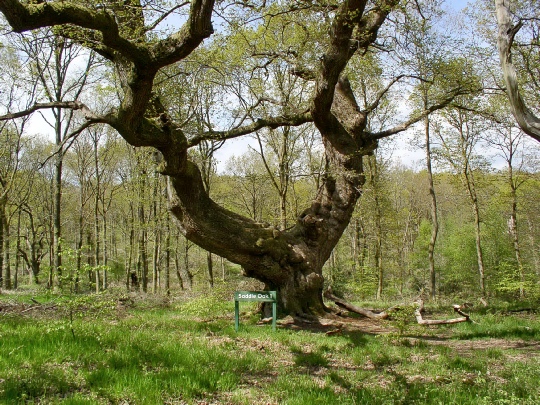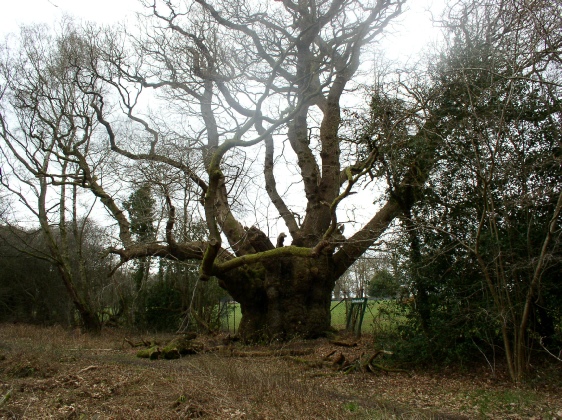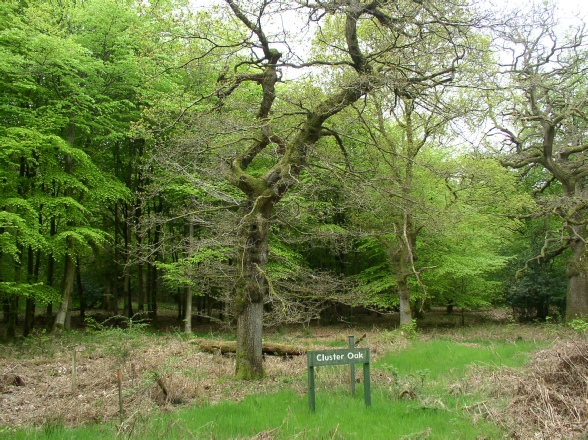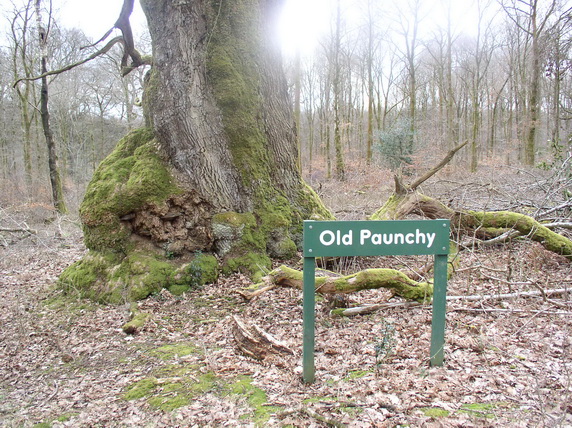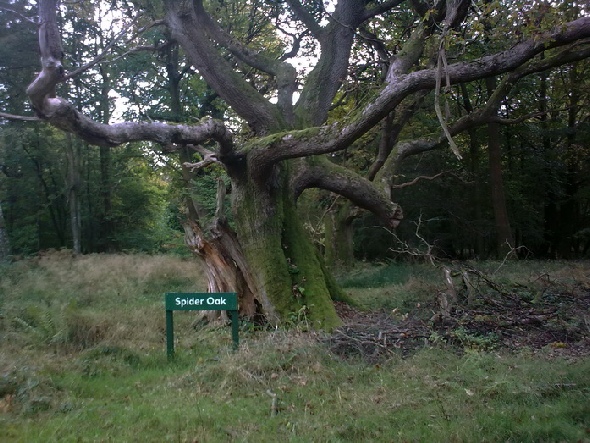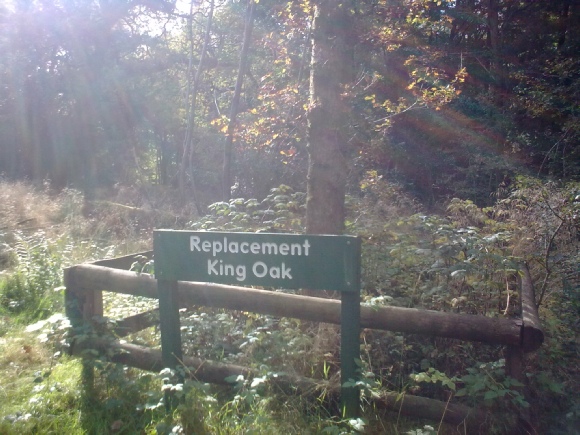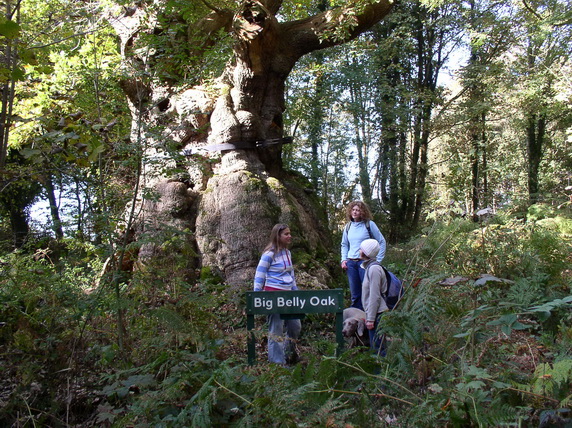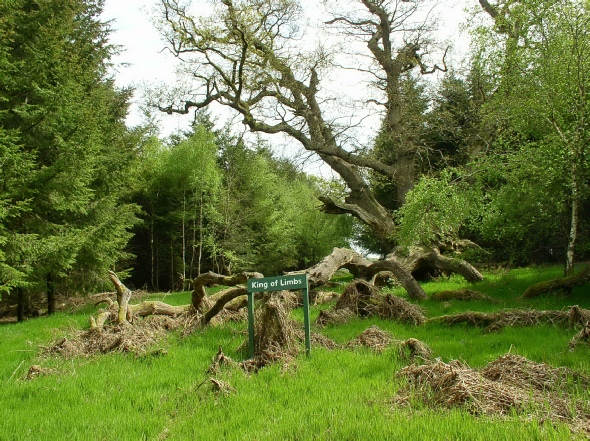






Savernake Forest contains over 7000 trees of various species that have been individually recorded by The Forestry Commission over the past few years, and that have been assigned as ‘Ancient’, ‘Veteran’ or ‘Notable’ status (the ‘A,V and N Trees’) by The Woodland Trust. (Click here for brief information on what these statuses mean). These trees are mostly: Oak, or Oak hybrids, Common Beech, Sweet Chestnut, Sycamore and Maple.
Some Oak Trees across the globe are thought to be up to 2000 years old; however, Savernake’s ‘Big Belly Oak’ (a mere youngster at between 1000 and 1100 year’s old) is said to be the oldest Oak Tree in England. It is humbling to think that such trees, and the more elderly Yews, are the oldest living things on this planet...... Many of the Ancient Oak Trees in Savernake are thought to be boundary markers, and were in existence before England came into being.
A couple of dozen of the oak trees have been named over the years, the most well-known being the Big Belly Oak (see left) at the side of the A346 just south of the village of Cadley. The King and Queen Oaks are marked on the current OS 157 Explorer Map; however the positions shown are not particularly accurate.
Very few of the other named trees are documented in any way; I would be quite comfortably well-off if I had £5 for every ‘Google’ that has been directed to this Site asking “Where can I find the Braydon Oak or the Cathedral Oak?” There is also some confusion about the numbering system that is used to catalogue the A, V and N Trees - there are actually three separate systems currently in-use with no correlation between the databases; one of Wiltshire Walks aims during 2011 (and probably beyond!) is to produce such a cross-reference system that will be available only to Wiltshire Walks ‘members’.
If you are having difficulty in locating the Named Oak Trees, then the obvious answer is to join our S9, S10 or S11 Guided Walks, whilst our S3, S4, S5, S6 or S7 Guided Walks pass by some of the better known Named Oaks to the north, west, and south-west of the Grand Avenue.
A Custom Walk can be arranged for those who wish to visit just a few of the less well-known Named Oaks, such as the Amity, Duke’s Vaunt, Crockmere, King of Limbs, Spiral and Slingsby.
Late Autumn, early Winter and Spring are good times to visit Savernake Forest to view these older trees, and although it can be a little muddy in places, the undergrowth is less dense and finding and viewing the trees is considerably easier with little or no foliage or vegetation - they also make great winter photographic subjects!
Summertime makes reaching a few of the more remote Named Trees a little more tricky; brambles and dense vegetation make long trousers and good walking boots essential. But many of the Named Trees are situated in magical forest settings, often in sunny clearings surrounded by their progeny - click here for a Photo Gallery of these Trees.
Here is a list of the known Named Oak Trees of which we are aware, perhaps you know of some more?
Further information about these Trees can be found by clicking here
Tree Names shown within quotation marks are the exact names shown on the Forestry Commission green ‘Plaques’.
- ‘Amity Oak’
- ‘Ayer’s Oak’
- ‘Big Belly Oak’
- ‘Braydon Oak’ - now named as ‘True Braydon Oak’
(originally the Braden or Broad Oak)
- ‘Cathedral Oak’ or ‘Millennial Oak’
- The (Ancestral) ‘Cluster Oak’
- ‘Creeping Oak’ (not standing)
- ‘Crockmere Oak’
- ‘Duke’s Vaunt Oak’
- ‘Green Fluted Oak’
- ‘The Kneeling Oak’
- ‘King of Limbs’
- (The Original) ‘King Oak’ (not standing)
- ‘Replacement King Oak’
- ‘Old Paunchy’
- ‘Pointing Oak’
- ‘New Queen Oak’
- Oak (Ordnance Survey 1916)
- ‘Original Queen Oak’
- ‘Saddle Oak 1’
- ‘Saddle Oak 2’
- Slingsby Oak
- ‘Spider Oak’
- ‘Spiral Oak’
- ‘Surveyed Oak’
- ‘Turkey Oak’
- ‘White Road Oak’
with one more non-oak being shown on Ordnance Survey Maps:
- Beech (Ordnance Survey 1916)
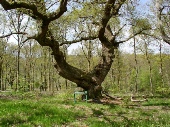
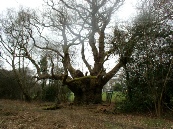
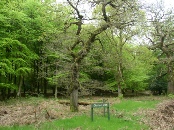
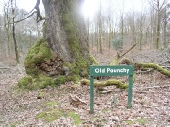
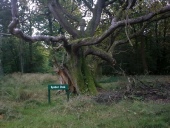
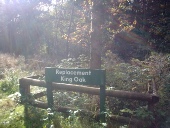
‘Hover’ over any Picture for a larger image

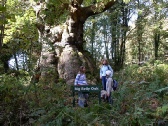
‘Big-Bellied Oak’
Saddle Oak 1
Cathedral Oak
The Cluster Oak
‘Old Paunchy’
The Spider Oak
Replacement King Oak
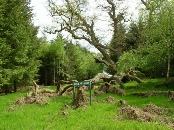
The King of Limbs

Click here for details on the Named Trees in Savernake

Click here for a Photo-Gallery of Ancient Trees in Savernake


| Avebury |
| Kennet Valley |
| Martinsell |
| Marlborough |
| Savernake |
| Villages |
| West Woods |
| Custom Walks |
| Self-Guided Walks |
| Map & Compass |
| Ley Line Dowsing |
| Ancient Trees |
| Walking for Beginners |
| Beginners Backpacking |
| Geocaching |
| Corporate |
| Activities |
| Corporate |
